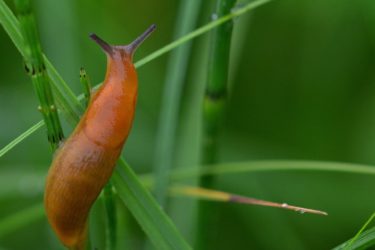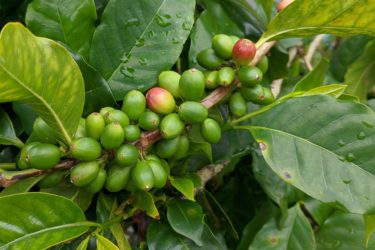Once upon a time, gardening was about asserting dominance over nature, and creating order out of chaos. Stern men with a slew of chemicals would remove or kill anything that prevented their vision of uniformly green lawns and regimented borders of flowers.
In recent years, however, this approach has fallen out of favour for a type of gardening that is much more in tune with nature; one that welcomes insects, and sees weeds as simply plants that are in the wrong place, rather than a fixed descriptor for a whole group of vegetation. In these gardens you’re much more likely to see a beer trap than you are slug pellets. Taking waste items from the house to recycle and reuse in the garden has become increasingly popular, and social media is full of ideas of how to reuse everything from old pallets to old teapots.
One waste product that has seen a huge increase in interest is used coffee grounds. Sales of fresh ground coffee saw an increase of over 11% between 2012 and 2018, and continue to rise. As a result, environmentally conscious coffee-drinkers have sought ways to reuse these grounds, particularly in the garden, where coffee waste is claimed to be good for everything from slug deterrence to improving compost. But do coffee grounds really work as suggested? Let’s take a look at three of the most common suggestions.
Repelling Slugs and Snails
Two theories are proposed for why coffee should repel slugs and snails. The first is that the rough coffee grounds are uncomfortable for the snails to traverse, and so they seek less painful routes, avoiding your precious plants. The second theory is that the caffeine in the grounds is said to be toxic. As this brilliant YouTube video by wildlife cameraman Steve Downer shows, sharp edges do not deter slugs and snails, which also means that all those crushed eggshells we’ve been told to use are also pointless.
The second theory appears to be based on a Nature study published in 2002 in which researchers tested the impact of caffeine spray on slugs and snails. You may have noticed that a liquid spray is quite different from solid coffee grounds. The researchers themselves pointed out that the spray is far more effective than grounds, while a toxicologist interviewed about the research noted that caffeine is indeed toxic – not just to garden pests like slugs and snails but also to beneficial insects.

Given this conflicting information, do coffee grounds actually repel slugs and snails? When the theoretical underpinnings are inconclusive we turn to experiment. A couple of people have tested their effectiveness and reported their results online. Their results found that coffee grounds presented no barrier to slugs or snails.
Conclusion: used coffee grounds do not repel slugs and snails.
Mulching Plants
Mulches are, as the Royal Horticultural Society describes, “loose coverings or sheets or material placed on the surface of the soil”. They help retain soil moisture, reducing the need for watering; they suppress weed growth; they act as a blanket to warm the soil in spring so enabling the growing season to begin sooner than would otherwise be possible, and they deter pests among other uses. Traditional mulches include straw, bark or wood chipping, well rotted manure and gravel.
It’s easy to see why coffee grounds are proposed as a mulch, but do they actually work? Celebrity gardener James Wong tested them and found that rather than enhance his crops, the coffee ground mulch caused the plants to become sick and die. His results are backed up by peer-reviewed research, which found that “All horticultural plants grew poorly in response to SCG [spent coffee grounds], regardless of soil type and fertiliser addition.”
The cause is obvious when you think about it: caffeine. Caffeine isn’t produced to stimulate coffee drinkers, but to protect the coffee plant from pests. It not only protects against insects eating the plant, but also protects against other plants growing near it. When the leaves and fruit fall to the ground, the caffeine contained in them seeps into the soil, inhibiting the growth of other plants. This isn’t unique to coffee: many plants suppress the growth of competitors in a process called ‘allelopathy’. But it does mean that applying a thick layer of caffeinated coffee grounds to your garden is likely to produce conditions well-suited to growing coffee plants… and little else.
Even if your coffee grounds are decaffeinated, they are unlikely to act as a good mulch. The key to mulches is their looseness – water and air must be able to penetrate. Coffee grounds are fine, and as anyone who has clay soil will know, fine particles have a tendency to dry as an impenetrable barrier that resists anything but the longest and heaviest of rain. As a result, instead of creating a mulch that retains water, you could be creating one that excludes water, causing your plants to die of thirst.
Conclusion: used coffee grounds are not a good mulch.
Improving Compost
Making basic compost is easy: you want a ratio of about 4:1 “brown” waste to “green” waste. Brown material provides carbon and consists of dry or woody plant material and other matter such as cardboard and newspaper. Green material provides nitrogen and includes weeds, food scraps and grass clippings.

Will adding coffee grounds to your compost turn it from good to great? Unfortunately, the evidence on this is confusing. The only thing everyone can agree on is that coffee is rich in nitrogen. As a result they are part of the “green” material, despite being brown in actual colour. Only a quarter of your compost should be green material, so there’s already a limit to how many coffee grounds you can add. But should you add any at all? A Canadian study tested three different composting systems and found that spent coffee grounds composted well. However, they found that earthworm mortality was significantly increased with the presence of coffee grounds, though the addition of cardboard reduced this mortality somewhat.
Conclusion: used coffee grounds can be added in moderation, providing cardboard is also added.
In summary
There are a huge number of uses proposed for coffee grounds in the garden, but there is little solid evidence for the effectiveness of many of them, and a lot of confusion. If you have coffee grounds that you want to use in your garden then I recommend using them sparingly and, if you can, try running your own tests. After all, in the words of Janet Kilburn Phillips, “There are no gardening mistakes, only experiments.”.



